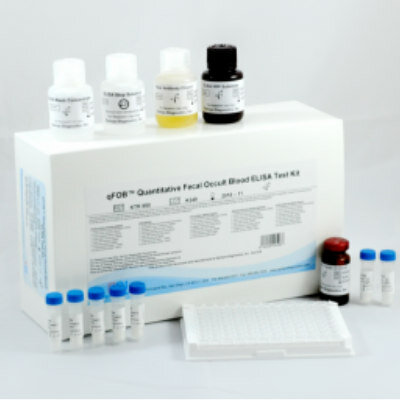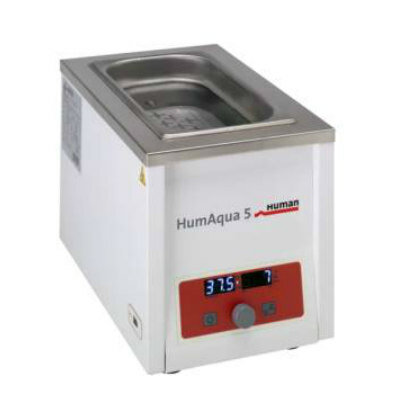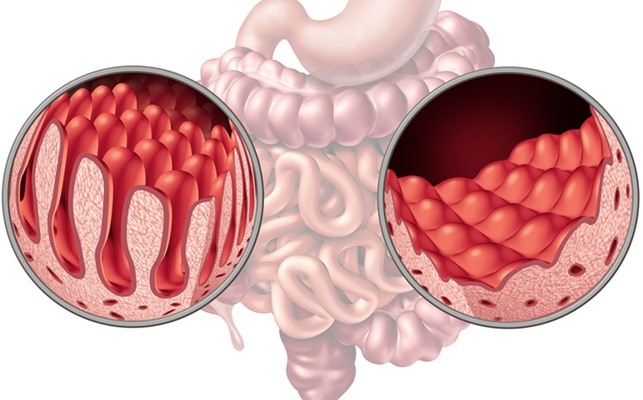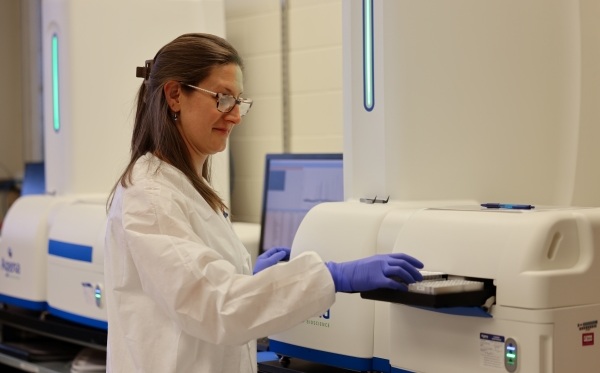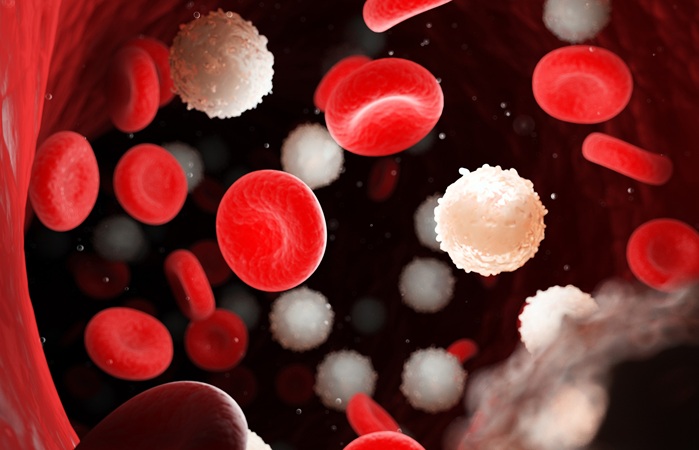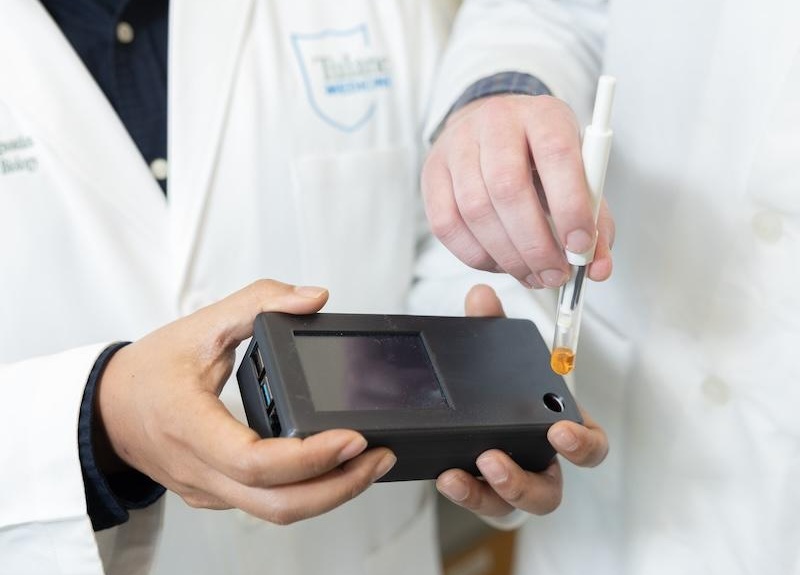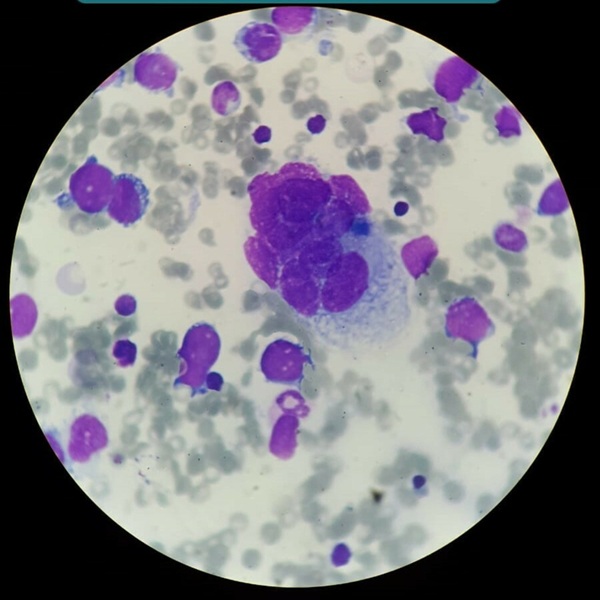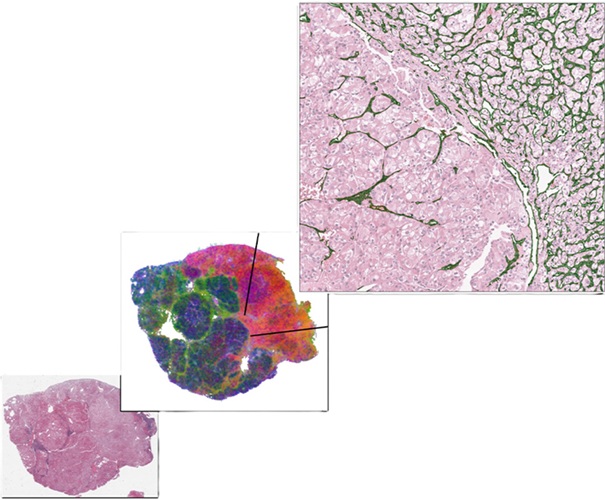Biochip Developed to Detect Prostate Cancer Cells
|
By LabMedica International staff writers Posted on 20 Jun 2018 |
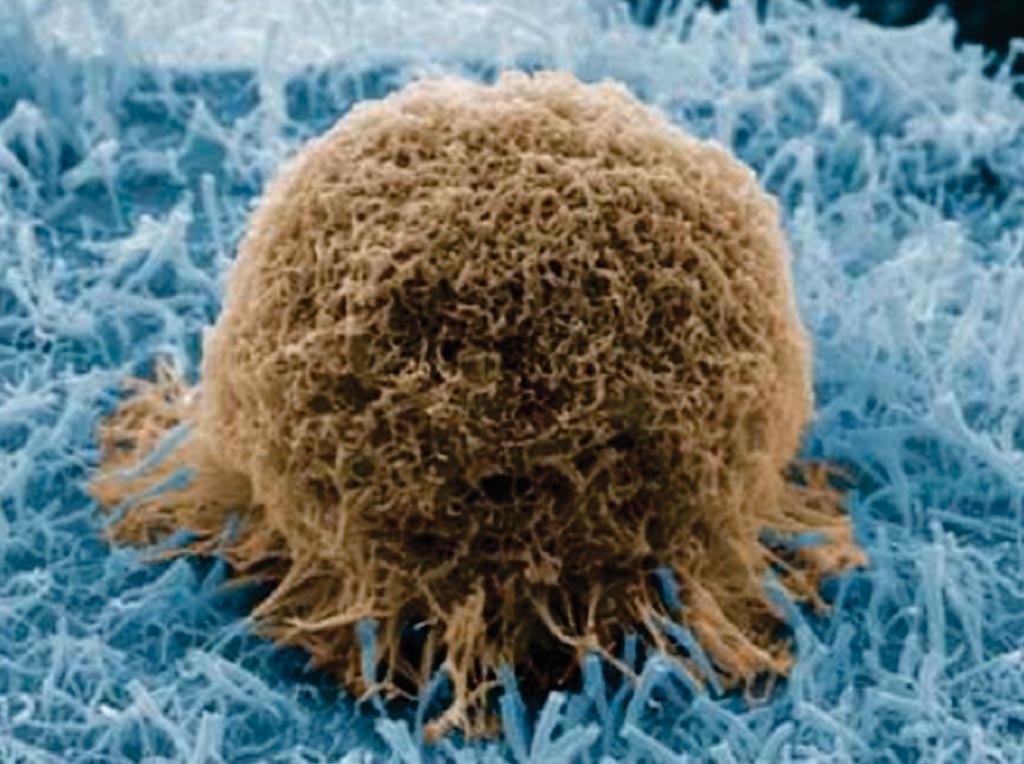
Image: A scanning electron micrograph (SEM) of a prostate cancer cell captured on frosted slide with silica nanowires (Photo courtesy of the American Chemical Society).
In men with prostate cancer, some tumor cells exit the prostate gland and circulate in the blood. Detecting these cells could enable diagnosis at an earlier stage or help doctors assess whether treatment is effective.
A new type of sensor has been developed that acts like Velcro for prostate cancer cells, sticking them to a modified frosted glass slide, like those used in medical laboratories, so that they can be identified from blood samples. The low-cost method could help doctors better diagnose and monitor the disease.
Scientists at the Chinese Academy of Sciences (Beijing, China) and their colleagues developed a simpler, more cost-effective way to monitor prostate cancer cells in the blood. The team based their device on frosted glass microscope slides. The frosted area, which is used to hold and label the slide, is a sandblasted surface with tiny depressions. They added a solution to the frosted slides that caused silica nanowires to grow on their surfaces, and then they suspended antibodies that recognized prostate cancer cells from the nanowires.
After getting captured by the antibodies, circulating tumor cells became trapped in the depressions on the slide and tangled up within the nanowires, similar to the interlocking surfaces of Velcro. The team could then visualize the cancer cells with microscopy, and found that the device had a capture efficiency on par with other approaches. When the scientists tested blood samples from prostate cancer patients, the devices detected as few as 10 tumor cells in 1 mL of blood.
The biochip showed the specificity and high capture efficiency of 85.4 ± 8.3% for prostate cancer cell line (PC-3). The micro-sized frosted slides and silica nanowires allow enhanced efficiency in capture epithelial cell adhesion molecule (EpCAM) positive cells by synergistic topographic interactions. The capture efficiency of biochip increased with the increase of silica nanowires length on frosted slide. The biochip shows that micro/nanocomposite structures improve the capture efficiency of PC-3 more than 70% compared to a plain slide.
The authors concluded that the nanobiochip has been successfully applied to identify circulating tumor cells (CTCs) from whole blood specimens of prostate cancer patients. Thus, this frosted slide-based biochip may provide a cheap and effective way of clinical monitoring of CTCs. The study was published on May 17, 2018, in the journal ACS Applied Materials & Interfaces.
Related Links:
Chinese Academy of Sciences
A new type of sensor has been developed that acts like Velcro for prostate cancer cells, sticking them to a modified frosted glass slide, like those used in medical laboratories, so that they can be identified from blood samples. The low-cost method could help doctors better diagnose and monitor the disease.
Scientists at the Chinese Academy of Sciences (Beijing, China) and their colleagues developed a simpler, more cost-effective way to monitor prostate cancer cells in the blood. The team based their device on frosted glass microscope slides. The frosted area, which is used to hold and label the slide, is a sandblasted surface with tiny depressions. They added a solution to the frosted slides that caused silica nanowires to grow on their surfaces, and then they suspended antibodies that recognized prostate cancer cells from the nanowires.
After getting captured by the antibodies, circulating tumor cells became trapped in the depressions on the slide and tangled up within the nanowires, similar to the interlocking surfaces of Velcro. The team could then visualize the cancer cells with microscopy, and found that the device had a capture efficiency on par with other approaches. When the scientists tested blood samples from prostate cancer patients, the devices detected as few as 10 tumor cells in 1 mL of blood.
The biochip showed the specificity and high capture efficiency of 85.4 ± 8.3% for prostate cancer cell line (PC-3). The micro-sized frosted slides and silica nanowires allow enhanced efficiency in capture epithelial cell adhesion molecule (EpCAM) positive cells by synergistic topographic interactions. The capture efficiency of biochip increased with the increase of silica nanowires length on frosted slide. The biochip shows that micro/nanocomposite structures improve the capture efficiency of PC-3 more than 70% compared to a plain slide.
The authors concluded that the nanobiochip has been successfully applied to identify circulating tumor cells (CTCs) from whole blood specimens of prostate cancer patients. Thus, this frosted slide-based biochip may provide a cheap and effective way of clinical monitoring of CTCs. The study was published on May 17, 2018, in the journal ACS Applied Materials & Interfaces.
Related Links:
Chinese Academy of Sciences
Latest Technology News
- Advanced Predictive Algorithms Identify Patients Having Undiagnosed Cancer
- Light Signature Algorithm to Enable Faster and More Precise Medical Diagnoses
- Disposable Microchip Technology Could Selectively Detect HIV in Whole Blood Samples
- Pain-On-A-Chip Microfluidic Device Determines Types of Chronic Pain from Blood Samples
- Innovative, Label-Free Ratiometric Fluorosensor Enables More Sensitive Viral RNA Detection
- Smartphones Could Diagnose Diseases Using Infrared Scans
- Novel Sensor Technology to Enable Early Diagnoses of Metabolic and Cardiovascular Disorders
- 3D Printing Breakthrough Enables Large Scale Development of Tiny Microfluidic Devices
- POC Paper-Based Sensor Platform to Transform Cardiac Diagnostics
- Study Explores Impact of POC Testing on Future of Diagnostics
- Low-Cost, Fast Response Sensor Enables Early and Accurate Detection of Lung Cancer
- Nanotechnology For Cervical Cancer Diagnosis Could Replace Invasive Pap Smears
- Lab-On-Chip Platform to Expedite Cancer Diagnoses
- Biosensing Platform Simultaneously Detects Vitamin C and SARS-CoV-2
- New Lens Method Analyzes Tears for Early Disease Detection
- FET-Based Sensors Pave Way for Portable Diagnostic Devices Capable of Detecting Multiple Diseases
Channels
Clinical Chemistry
view channel
AI-Powered Blood Test Accurately Detects Ovarian Cancer
Ovarian cancer ranks as the fifth leading cause of cancer-related deaths in women, largely due to late-stage diagnoses. Although over 90% of women exhibit symptoms in Stage I, only 20% are diagnosed in... Read more
Automated Decentralized cfDNA NGS Assay Identifies Alterations in Advanced Solid Tumors
Current circulating cell-free DNA (cfDNA) assays are typically centralized, requiring specialized handling and transportation of samples. Introducing a flexible, decentralized sequencing system at the... Read more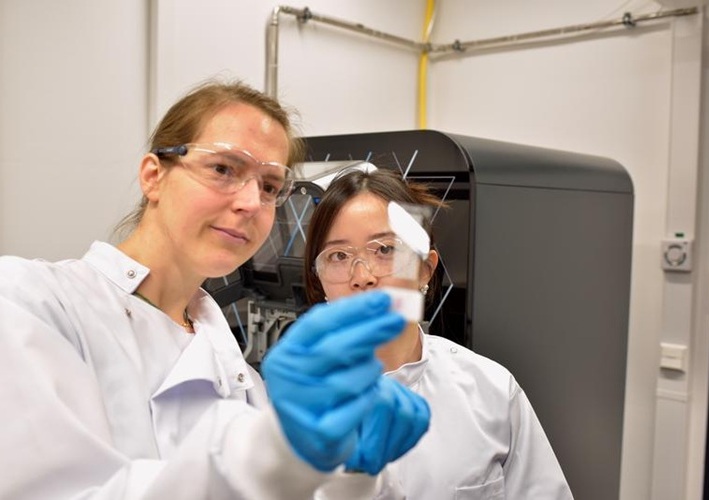
Mass Spectrometry Detects Bacteria Without Time-Consuming Isolation and Multiplication
Speed and accuracy are essential when diagnosing diseases. Traditionally, diagnosing bacterial infections involves the labor-intensive process of isolating pathogens and cultivating bacterial cultures,... Read more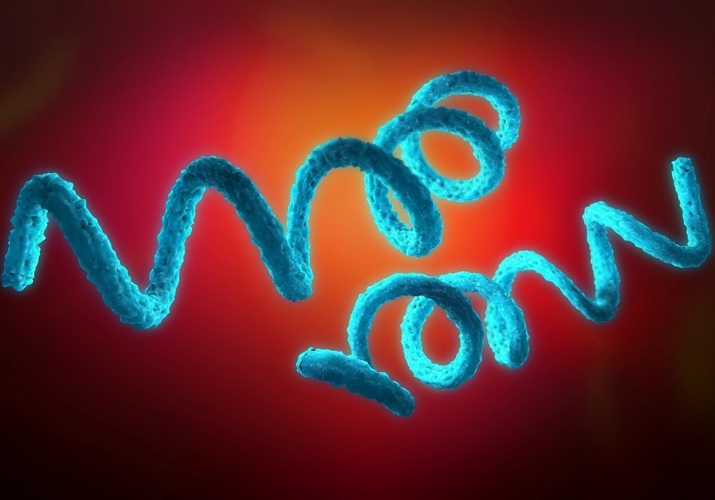
First Comprehensive Syphilis Test to Definitively Diagnose Active Infection In 10 Minutes
In the United States, syphilis cases have surged by nearly 80% from 2018 to 2023, with 209,253 cases recorded in the most recent year of data. Syphilis, which can be transmitted sexually or from mother... Read moreMolecular Diagnostics
view channel
POC Oral Swab Test to Increase Chances of Pregnancy in IVF
Approximately 15% of couples of reproductive age experience involuntary childlessness. A significant reason for this is the growing trend of delaying family planning, a global shift that is expected to... Read more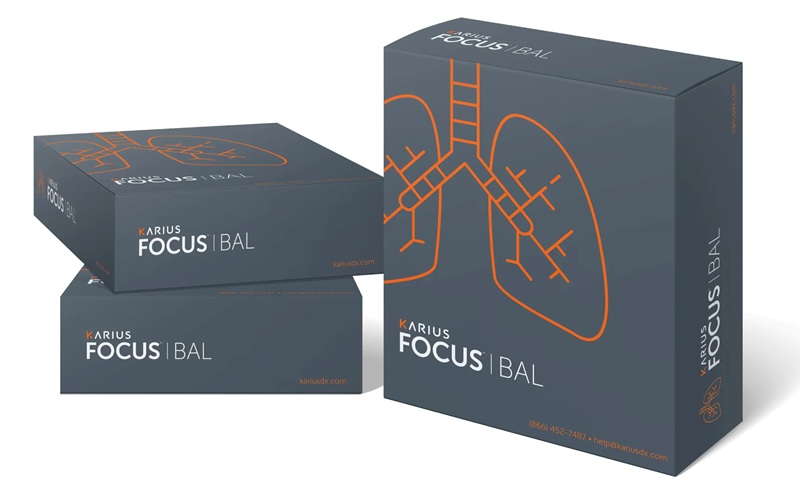
Microbial Cell-Free DNA Test Accurately Identifies Pathogens Causing Pneumonia and Other Lung Infections
Bronchoalveolar lavage (BAL) is a commonly used procedure for diagnosing lung infections, especially in immunocompromised patients. However, standard tests often fail to pinpoint the exact pathogen, leading... Read moreHematology
view channel
First Point-of-Care Heparin Monitoring Test Provides Results in Under 15 Minutes
Heparin dosing requires careful management to avoid both bleeding and clotting complications. In high-risk situations like extracorporeal membrane oxygenation (ECMO), mortality rates can reach about 50%,... Read more
New Scoring System Predicts Risk of Developing Cancer from Common Blood Disorder
Clonal cytopenia of undetermined significance (CCUS) is a blood disorder commonly found in older adults, characterized by mutations in blood cells and a low blood count, but without any obvious cause or... Read moreImmunology
view channel
Stem Cell Test Predicts Treatment Outcome for Patients with Platinum-Resistant Ovarian Cancer
Epithelial ovarian cancer frequently responds to chemotherapy initially, but eventually, the tumor develops resistance to the therapy, leading to regrowth. This resistance is partially due to the activation... Read more
Machine Learning-Enabled Blood Test Predicts Immunotherapy Response in Lymphoma Patients
Chimeric antigen receptor (CAR) T-cell therapy has emerged as one of the most promising recent developments in the treatment of blood cancers. However, over half of non-Hodgkin lymphoma (NHL) patients... Read moreMicrobiology
view channel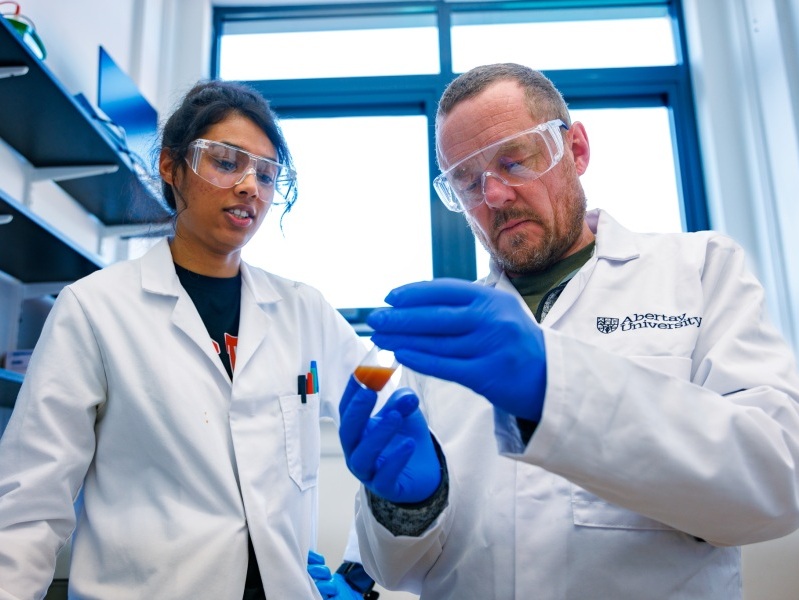
New Blood Test Detects Up to Five Infectious Diseases at POC
Researchers have developed a prototype flow-through assay capable of detecting up to five different infections, with results that can be quickly analyzed and transmitted via a specialized smartphone app.... Read more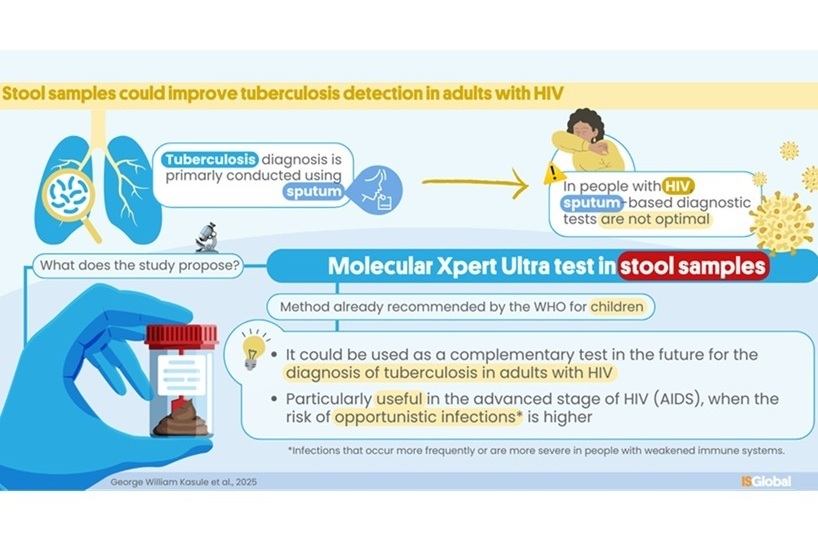
Molecular Stool Test Shows Potential for Diagnosing TB in Adults with HIV
Tuberculosis (TB), caused by the bacterium Mycobacterium tuberculosis, led to 1.25 million deaths in 2023, with 13% of those occurring in people living with HIV. The current primary diagnostic method for... Read morePathology
view channel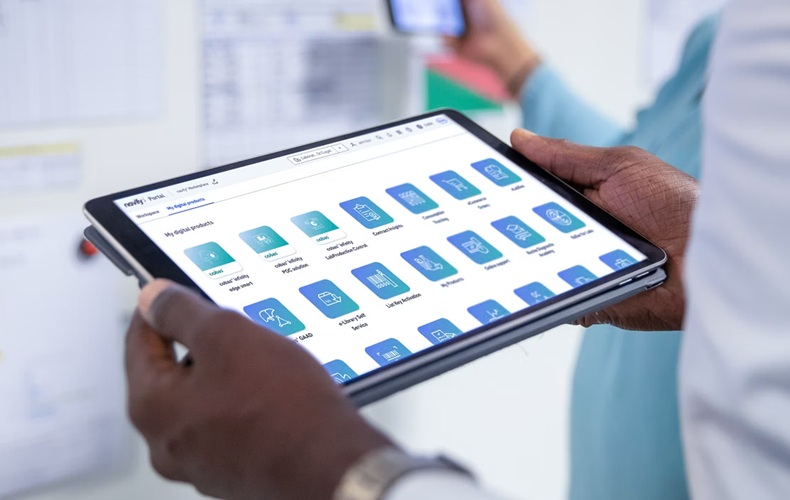
Groundbreaking Chest Pain Triage Algorithm to Transform Cardiac Care
Cardiovascular disease is responsible for a third of all deaths worldwide, and chest pain is the second most common reason for emergency department (ED) visits. With EDs often being some of the busiest... Read more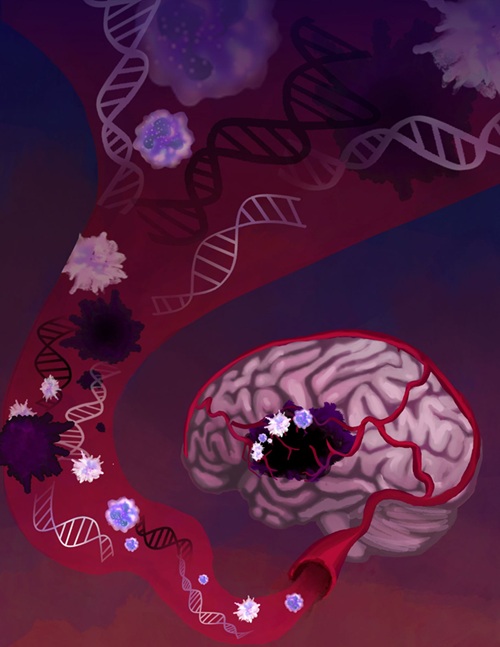
AI-Based Liquid Biopsy Approach to Revolutionize Brain Cancer Detection
Detecting brain cancers remains extremely challenging, with many patients only receiving a diagnosis at later stages after symptoms like headaches, seizures, or cognitive issues appear. Late-stage diagnoses... Read moreIndustry
view channel
Qiagen Acquires NGS Analysis Software Company Genoox
QIAGEN (Venlo, the Netherlands) has signed a definitive agreement to acquire Genoox (Tel Aviv, Israel), a provider of artificial intelligence (AI)-powered software that enables clinical labs to scale and... Read more
Cepheid and Oxford Nanopore Technologies Partner on Advancing Automated Sequencing-Based Solutions
Cepheid (Sunnyvale, CA, USA), a leading molecular diagnostics company, and Oxford Nanopore Technologies (Oxford, UK), the company behind a new generation of sequencing-based molecular analysis technologies,... Read more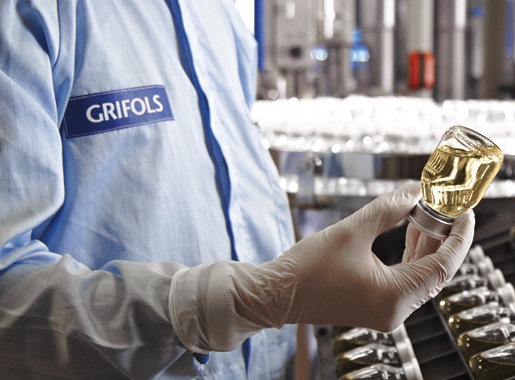
Grifols and Tecan’s IBL Collaborate on Advanced Biomarker Panels
Grifols (Barcelona, Spain), one of the world’s leading producers of plasma-derived medicines and innovative diagnostic solutions, is expanding its offer in clinical diagnostics through a strategic partnership... Read more







